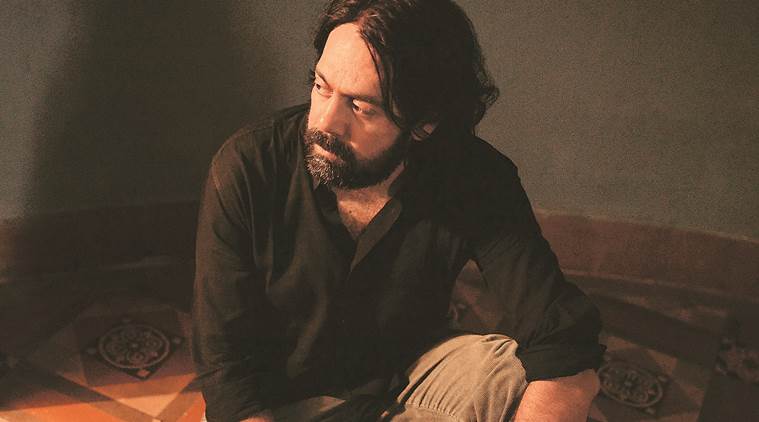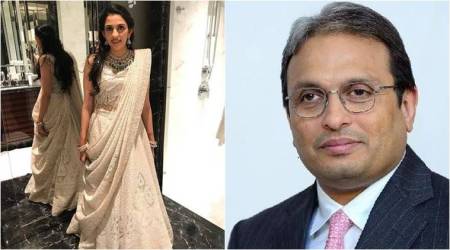
Something Wicked This Way Comes
Written by Anushree Majumdar | Published: March 26, 2018 12:15 am ..
Written by Anushree Majumdar | Published: March 26, 2018 12:15 am A still from the film Palace of Horrors.Top News

Argentina to be 'Messi's team' at the 2018 FIFA World Cup: Jorge Sampaoli

Family Time With Kapil Sharma first episode highlights: Kapil is back with a bang!

Islamabad United beat Peshawar Zalmi by three wickets, win PSL 2018: As it happened
In the beginning of Ashim Ahluwalia’s new short, Palace of Horrors, he embeds the tiniest hint of the events that will come to pass. A voice-over, attributed to James Buck, the American narrator of the tale, goes thus: “Barnaby used to say that Gentry had this incredible gift of sight, that he had the strength to look at things that others could not stomach.” It is 1913, and Buck is a long way from home, as he makes his way through a dense forest in Bengal with his employer HP Gentry, Ghosh, a local guide, and two coolies; a dilapidated palace is in the distance, a ruin overrun by foliage, a place the living have no business entering.
None of this matters to Gentry, says Ahuwalia over email, whose job is to locate ‘objets d’freak’ if you will, from all over the world, and sell them to circus companies in Europe and America. Part folk horror story, part revenge tale, Palace of Horrors is a quiet commentary on the West’s arrogant notion that what they have never encountered cannot possibly exist. “I was looking at a lot of Orientalist, Raj-period films, like Gunga Din (1939) — films that were made at a time when the British were riding around on elephants, being carried by natives, going into the jungle, exoticising their colonies. They created this fantasy of the ‘oriental savage’, and that allowed the Europeans to appear ‘civilised’ in comparison, to justify their widespread loot and plunder. So, it just felt natural to make a colonial horror film, especially as an Indian filmmaker thinking back on that period,” says Ahluwalia. His short is part of an anthology, The Field Guide to Evil, that premiered at the SXSW Film Festival in Austin, Texas, last week.
“A bunch of producers including those involved with films like Blair Witch, Anomalisa and The Lobster wanted to produce an anthology feature film focusing on folk horror from different cultures. I’d never made a horror film before, but the project was financed, and I was given freedom to do whatever I wanted, so it was hard to resist,” says Ahluwalia, 46, who then turned his sights to the east, to Bengal, one of the earliest places to be thoroughly colonised in the subcontinent. “I think Bengal has an ancient quality, and Bengalis have always been obsessed with horror. The old wives’ tales, the stories the neighbours tell, there are all kinds of ghosts and each type has a name. And Bengal was the jewel in the crown — so there was kind of a dark exotica there,” he says.
 Ashim Ahluwalia
Ashim Ahluwalia
In the writing of the film, Ahluwalia eagerly tips his hat to the master of macabre, Edgar Allan Poe, and warden of the weird, HP Lovecraft. “Poe and Lovecraft were huge influences in the tone of the film. I was keen to make something gothic, in black-and-white, with strong Indian features. For me, ‘folk horror’ is an emphasis on the horrific side of folklore — weird, dark, ancient tales that were passed on by word of mouth,” says Ahluwalia, who lists three British films, Witchfinder General (1968), The Blood on Satan’s Claw (1971), and The Wicker Man (1973) that set the template for the genre. “An ancient landscape, an isolated community, and occult folklore,” he says.
Ahluwalia works those elements in with that unbeatable staple of desi horror — a woman in a white saree with the deadliest side-eye ever (played by Niharika Singh), who watches over a menagerie of creatures abandoned by a king who lost his mind. “She plays a sadhvi, and I borrowed her look from Sarada Devi and other 19th century female mystics. She’s great because she embodies a kind of disturbing look that I love — is she holy, untrustworthy or just completely possessed,” he says. Singh is accompanied by Ghosh, an English-speaking bhadrolok, who has no qualms about hustling for the white man, graciously selling parts of his people and culture — as long as he can return home in time for dinner.
Though the nearly 11-minute film has been shot on digital, Palace of Horrors is a wonderful pastiche of mediums, including old recordings and archival photographs, that make it a deliciously eerie postcard from the past. “I was influenced by colonial black-and-white cinematography, glass plate negative photographs taken in India by the British in the 19th century — those images can be very creepy. I wanted to work with greyscale, almost like it was shot in gaslight. Old things, music recordings, are intrinsically ghostly because people who made them are long dead and often totally forgotten,” says Ahluwalia, who shot the film in four days. While a commercial release in India hasn’t been planned as yet, the anthology is heading for a worldwide release on Netflix. What’s next? “I’m always developing stuff, writing things. I want to try something I haven’t done before.”
For all the latest Entertainment News, download Indian Express App
More Top News



